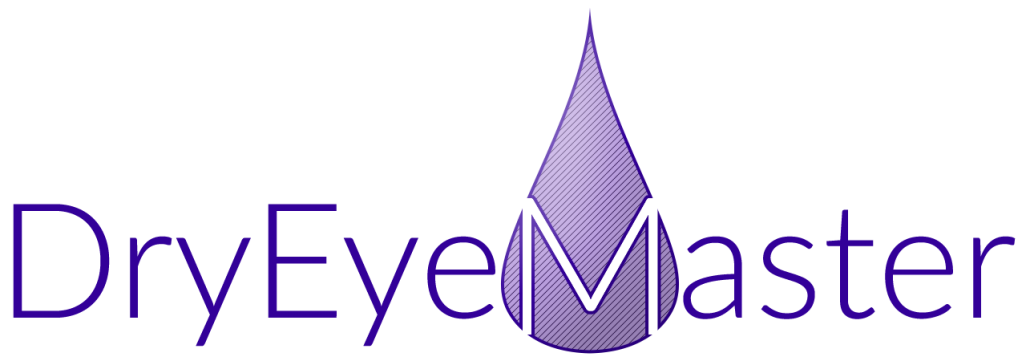How ophthalmology can “adopt” technologies from other specialties
By Laura M. Periman, MD & Ami A. Shah, MD
April 23, 2019
Visit the original publication: Ophthalmology Times
Editor’s Note: Welcome to “Let’s Chat,” a blog series featuring contributions from members of the ophthalmic community. These blogs are an opportunity for ophthalmic bloggers to engage with readers with about a topic that is top of mind, whether it is practice management, experiences with patients, the industry, medicine in general, or healthcare reform. The series continues with this blog by Laura M. Periman, MD, and Ami A. Shah, MD. The views expressed in these blogs are those of their respective contributors and do not represent the views of Ophthalmology Times or MJH Associates.
Many medical specialties share medications and technologies, from various classes of drugs to diagnostic testing and surgical instruments. In ophthalmology, we tend to see ourselves as set apart from most specialties because of the unique needs and limitations of working with the eye. We’ve seen a few noticeable crossovers recently, however, particularly from aesthetics. Here are just a few “adopted” technologies we’re happy to see in the hands of ophthalmologists.
Intense pulsed light (IPL) therapy
IPL therapy has been used in aesthetics since the 1990s to improve skin texture and treat rosacea. First-generation platforms required tremendous expertise, but newer, sixth-generation technologies (Optima IPL with the OPT technology, Lumenis), coupled with corneal shields, have the safety profile needed to address the eyelid and adnexa, particularly targeting telangiectasias associated with ocular inflammation.
We do not yet have published papers comparing the clinical efficacy of treating directly on the eyelids (with large, laser-grade, corneal-shield protected globes) compared to treating outside the orbital rim (with disposable laser-grade external ocular shield stickers).
Dozens of peer-reviewed papers report the efficacy of IPL as an effective drug-free approach to treating ocular rosacea-associated and non-rosacea-associated meibomian gland dysfunction (MGD) and DED. This effect is thought to occur via multi-level impacts on the inflammation factors that drive both the MGD and DED components of ocular surface disease.1
Patients then repeat IPL 1 or 2 times per year, depending on the severity of the underlying disease comorbidities. Additionally, recent confocal microscopic evidence exists for microstructure improvements of meibomian glands as well as significant decreases in peri-glandular inflammatory cells with IPL therapy.4
Patients report high satisfaction and appreciate the aesthetic benefits, such as improved eyelid redness, conjunctival redness and facial flushing.
Botulinum toxin A (BTA) (Botox, Allergan; Dysport, Galderma; Xeomin, Merz Aesthetics)
Recently, neurologists and ophthalmologists have been exploring BTA’s potential for treatment of neuropathic pain syndromes.7,8 Strategic injection of BTA also could produce any number of benefits to the ocular surface by addressing corneal allodynia and neuralgia of the ophthalmic branch of the trigeminal nerve.
In ophthalmology, BTA injections in young aesthetic patients can mitigate lateral canthal rhytids addressing decreased Schirmer’s testing and tear breakup time.9
Conversely, in patients with blepharospasm and concurrent DED, strategic injection at the lateral canthus and pretarsal orbicularis can improve symptoms and reduce inflammatory cytokine production.10
In refractory filamentary keratitis patients, a similar low-dose pre-tarsal injection technique was shown to resolve filaments in nearly 90% of patients.11 A single lower eyelid injection medial to the punctum can weaken the Horner’s muscle, reducing tear drainage by approximately 40%.12
This technique also increases post-LASIK patient satisfaction by reducing lubricant dependency, with fewer complications than silicone punctal plugs.13 Injections in the lacrimal gland have helped patients with epiphora due to hyperreflexive lacrimation.14 Lastly, injected specifically to induce ptosis, BTA can offer a temporary tarsorraphy to protect the ocular surface.
Topical medications
Unfortunately, in addition to the aerodynamic impacts on evaporative dry eye from the abnormal eyelash lengthening effect associated with overuse, prostaglandins can also create lid margin redness, discoloration, dermatitis, and exacerbation of MGD.
XAF5, a topical prostaglandin ointment by Topokine Therapeutics, is undergoing phase 2b/3 trials to assess its efficacy in treating lower eyelid steatoblepharon, capitalizing on the side effect of periorbital atrophy induced by topical ophthalmic prostaglandin analogs for aesthetic use.15
The potential for MGD exacerbations, dermatitis, eyelid hyperpigmentation, and other side effects associated with this modality of aesthetic treatment may pose issues if it becomes FDA approved.
Hyaluronic acid gel (HAG) fillers
HAG has been found to be as efficacious as allograft dermal grafting or hard palate grafting to improve the position of the lower eyelids,16 as well as to improve and restore normal eyelid anatomy to correct lagophthamos, congenital ectropion, upper eyelid retraction, among other malpositions.17
Clearly, ophthalmology, dermatology, and aesthetics benefit each other through shared medications and technologies. In the future, we anticipate seeing many more crossovers and “adopted” technologies used routinely in ophthalmology.
Laura M. Periman, MD, Dr. Periman is an ocular surface disease expert and Director of Dry Eye Services and Clinical Research in Seattle, WA. You can follow her on Twitter at @DryEyeMaster.
Ami A. Shah, MD
Dr. Shah is founder of SF Gotox, a Mobile Aesthetic Care Company in the Bay Area, CA.
1. Liu R, Rong B, Tu P, et al. Analysis of Cytokine Level in Tears and Clinical Correlations After Intense Pulsed Light Treating Meibomian Gland Dysfunction. AJO. 2017 Nov;183: 81-90.
2. Craig JP, Chen YH, Turnbull PR. Prospective trial of intense pulsed light for the treatment of meibomian gland dysfunction. Invest Ophthalmol Vis Sci. 2015 Feb 12;56(3):1965-70.
3. unpublished data
4. Yin Y, Liu N, Gong L, Song N. Changes in the Meibomian Gland After Exposure to Intense Pulsed Light in Meibomian Gland Dysfunction (MGD) Patients. cure Eye Res. 2018 Mar;43(3): 308-313.
5. Scott AB, Miller JM, Shieh KR. Treating Strabismus by Injecting the Agonist Muscle with Bupivacaine and the Antagonist with Botulinum Toxin. Trans Am Ophthalmol Soc. 2009 Dec;107:104-109.
6. Romanov A, Pokushalov E, Ponomarev D, et al. Long-term suppression of atrial fibrillation by botulinum toxin injection into epicardial fat pads in patients undergoing cardiac surgery: Three-year follow-up of a randomized study. Heart Rhythm. 2019 Feb;16(2):172-177.
7. Park J, Park HJ. Botulinum Toxin for the Treatment of Neuropathic Pain. Toxins (Basel). 2017 Sep; 24;9(9):260.
8. Diel RJ, Kroeger ZA, Levitt RC, et al. Botulinum Toxin A for the Treatment of Photophobia and Dry Eye. Ophthalmology. 2018 Jan; 125(1): 139–140.
9. Ho MC, Hsu WC, Hsieh YT. Botulinum Toxin Type A Injection for Lateral Canthal Rhytids. JAMA Ophthalmol. 2014;132(3):332-337.
10. Lu R, Huang R, Li K, et al. The influence of benign essential blepharospasm on dry eye disease and ocular inflammation. Am J Ophthalmol. 2014 Mar;157(3):591-7.e1-2.
11. Gumus K, Lee S, Yen MT, Pflugfelder SC. Botulinum toxin injection for the management of refractory filamentary keratitis. Arch Ophthalmol. 2012 Apr;130(4):446-50.
12. Sahlin S, Chen E, Kaugesaar T. Effect of eyelid botulinum toxin injection on lacrimal drainage. Am J Ophthalmol. 2000 Apr;129(4):481-6.
13. Fouda SM, Mattout HK. Comparison Between Botulinum Toxin A Injection and Lacrimal Punctal Plugs for the Control of Post-LASIK Dry Eye Manifestations: A Prospective Study. Ophthalmol Ther. 2017 Jun;6(1):167-174.
14. Singh S, Ali MJ, Paulsen F. A review on use of botulinum toxin for intractable lacrimal drainage disorders. Int Ophthalmol. 2018 Oct;38(5):2233-2238.
15. Mérida S, Palacios E, Navea A, Bosch-Morell F. New Immunosuppressive Therapies in Uveitis Treatment. Int J Mol Sci. 2015 Aug 11;16(8):18778-95.
16. Goldberg RA, Lee S, Jayasundera T, et al. Treatment of lower eyelid retraction by expansion of the lower eyelid with hyaluronic Acid gel. Ophthalmic Plast Reconstr Surg. 2007 Sep-Oct;23(5):343-8.
17. Mancini R. Managing eyelid malpositions with hyaluronic acid gel injections. Int Ophthalmol Clin. 2013 Summer;53(3):11-20.



